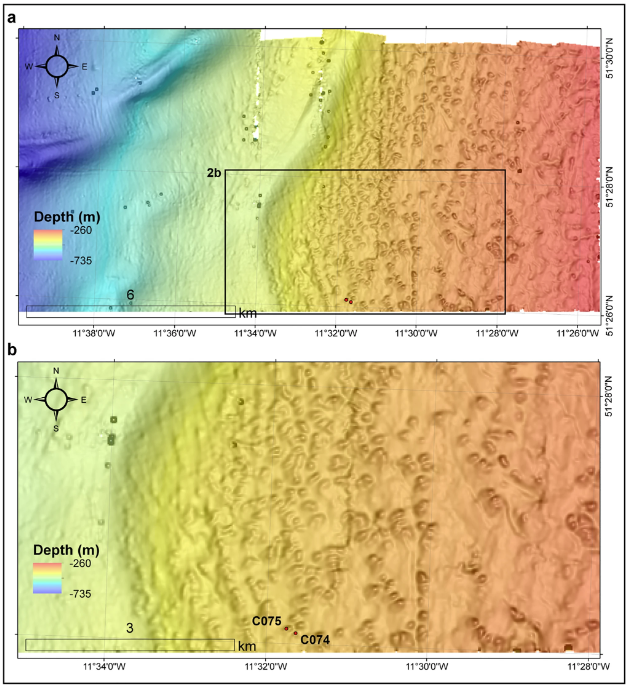Publications
Development and physical characteristics of the Irish shelf-edge Macnas Mounds, Porcupine Seabight, NE Atlantic
- Authors
Erica Terese Krueger, Vincent Mouchi, Xavier Monteys, Stephen McCarron, Aaron Lim & Quentin G. Crowley
- Year
- 2024
- Journal Name
- International Journal of Earth Sciences
- Category
- Journal Article
- Full Citation
Krueger, E.T., Mouchi, V., Monteys, X. et al. Development and physical characteristics of the Irish shelf-edge Macnas Mounds, Porcupine Seabight, NE Atlantic. Int J Earth Sci (Geol Rundsch) (2024). https://doi.org/10.1007/s00531-024-02402-0
- Link to Publication
- https://link.springer.com/article/10.1007/s00531-024-02402-0#citeas

Abstract
Modern cold-water corals (CWCs) occur in a wide range of water depths, with Desmophyllum pertusum being one of the most common species. Pleistocene, Holocene, and modern coral mound formation by living CWC reefs have previously been described in the Porcupine Seabight from water depths greater than 700 m in the vicinity of the transitional zone between the Eastern North Atlantic Water and Mediterranean Outflow Water. Here we document occurrence of fossil corals retrieved from two cores at 370 m depth in the Macnas Mounds, a relatively shallow occurrence for mounds on the Irish shelf-edge. Both cores feature D. pertusum restricted to the upper two metres, immediately overlying an erosive surface and a coeval major down-core change in grain size from sand to mud. Radiocarbon dating of coral specimens indicates the CWC mounds initiated 7.82 Cal ky BP. Our study unequivocally documents the existence of Holocene shelf-edge coral mounds in the eastern Porcupine Seabight and highlights the possibility of other occurrences of CWCs in similar settings elsewhere in the northeast Atlantic. Given that no living CWCs were encountered in the study area, we suggest that the area previously experienced more favourable conditions for CWC mound initiation and development along the shelf-edge margin, possibly due to differing conditions in the European Slope Current which flows northward along the continental slope from south of the Porcupine Bank to the Faroe-Shetland Channel.


